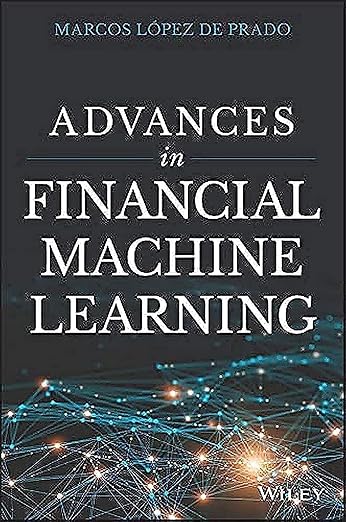Physical Address
304 North Cardinal St.
Dorchester Center, MA 02124
Physical Address
304 North Cardinal St.
Dorchester Center, MA 02124

Few books in modern finance have shaped the trajectory of quantitative research and trading the way Advances in Financial Machine Learning has. Authored by Marcos López de Prado, a leading figure in the intersection of machine learning and institutional asset management, this 2018 publication has become essential reading for anyone working—or aspiring to work—at the frontier of quant finance.
With its rigorous approach, practical tools, and deep industry credibility, the book poses a compelling case to be considered the single most important text in the field today. But what makes it so impactful, and who should read it? Let’s take a closer look.
Marcos López de Prado holds a PhD in financial economics and a PhD in mathematical finance. He’s led machine learning efforts at some of the world’s most influential asset managers, including Guggenheim Partners and AQR. He’s also a lecturer at Cornell and has authored dozens of peer-reviewed papers. In short, he’s one of the rare voices who has bridged academic innovation and real-world trading.
At its core, Advances in Financial Machine Learning is about improving the scientific rigor of quantitative finance. While many trading strategies rely on backtests and data-mined signals, López de Prado argues for a disciplined, repeatable research process driven by proper experimental design.
Here are some of the foundational ideas introduced or popularized by the book:
Unlike many academic books that lean heavily on theory or coding books that focus narrowly on implementation, this text offers a rare combination of:
While this is not a beginner’s book, it’s also not inaccessible. The ideal reader has a working knowledge of:
It’s especially useful for:
While the book is widely praised, it’s not without limitations. Some chapters are dense and assume mathematical comfort. The Python examples may require adaptation to run in real-world systems. And readers looking for “plug-and-play” strategies will likely be disappointed—it’s a book for building durable processes, not shortcuts.
But for those willing to put in the time, the payoff is significant. Readers routinely cite it as the single most important book in their quant career development.
The hardcover edition is priced at a premium, which reflects both its quality and its target audience. You can purchase it directly here:
👉 Buy Advances in Financial Machine Learning on Amazon
Available in hardcover and Kindle editions. (Affiliate link)
Disclosure: This post contains affiliate links. If you purchase through these links, I may earn a commission at no extra cost to you. This helps support the site and allows me to continue reviewing impactful books in finance and quantitative research.